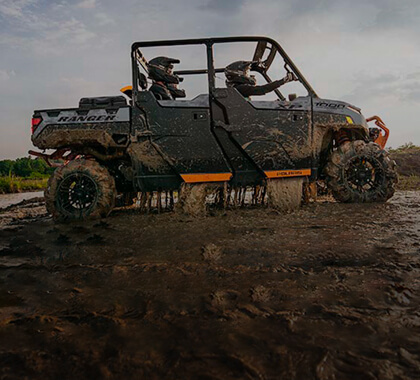Polaris Ranger Clutch Bearings, One-Way Bearings, And Two-Way Bearings
Sep 15th 2022
From wheel bearings to carrier bearings, there are several types of bearings that are used in the Polaris Ranger. Among them, the one way bearing in the clutch is particularly important, and it’s a component that sometimes seizes up or breaks down. In fact, there’s a service advisory on certain Polaris Ranger models regarding the one way bearing, so you might be able to get your dealer to give you a free fix if the bearing freezes up on you. Alternatively, you could potentially solve your clutch-related issues by cleaning your one way bearing, or you could do the one way bearing delete and install an aftermarket two way bearing like the ones by Gilomen Innovations. Whatever your situation entails, here is what you need to know about Polaris Ranger clutch bearings!
Polaris Ranger One Way Clutch Bearings

The one way bearing inside your Polaris Ranger clutch is there to transfer torque from the shaft to the belt in one direction, and allow for open movement in the other direction. In this way, Polaris Ranger one way bearings are key for engine braking (EBS).
Identifying A Toasted One Way Bearing

If your clutches are wide open when you park, or if you take the belt off and see that the one way bearing spins in both directions (or it doesn't spin at all), you’ve got yourself a bad bearing. Taking the primary apart down to the individual pieces isn’t a hard task, it just takes a lot of torque on the spider nut and spider. Depending on your Ranger year, model, and edition, you might not need a clutch puller to replace your one way bearing. The front haf of the clutches in XP Rangers, for example, can be removed without a clutch tool. But in the Ranger 1000, you’ll at least need a bolt that can thread into the clutch to pull it off.
If you’ve checked and made sure that the bearing in the primary clutch spins when you rotate the secondary clutch (the one in the rear), you’ll then want to clean / blow the clutches out with pressurized air. If the clutches / belts are super dirty, they can stick or slip – i.e. engaging when they shouldn’t be or disengaging when they shouldn’t be. The bolt holding the secondary in place has some spacers behind the washer for clutch adjustments as well, so checking to make sure that your clutch alignment is right could save you from having to replace anything (alignment shims can also help with this). Other possibilities for clutch issues in the Polaris Ranger include worn out or damaged weights, rollers, springs, and bushings. Unfortunately, though, there's no easy way to know what's wring until you remove / inspect the aforementioned components.
One-Way Deletes & EBS Lockout Shims For The Polaris Ranger

A popular way to fix the one way bearing in the Polaris Ranger is to remove it from the equation entirely. And with the EBS deletes from companies like Gilomen, you can get a two way bearing for amazing clutch performance, and lockout shims that prevent the EBS from engaging the belt for even better clutch performance. Not only will you be shifting like butter, but with a two way bearing, lockout shims, as well as alignment shims, you’ll be pulling with ease, creeping around at slow speeds without issue, and accelerating smoothly during takeoffs time after time! Then, if you install snow tracks or mud tires, you can then upgrade the weights and add a Mudder spring!
Final Thoughts
The engine braking system in the Polaris Ranger can be a bit too aggressive for some folks, but it can also cause premature damage to the belt. By deactivating the EBS helix with a lockout shim, you can extend the life of your belts and eliminate the need for Polaris Ranger one way bearings. The EBS delete kit, however, isn’t available for vehicles made before 2018, and it’s only for the 2nd Generation new-body-style editions of the Polaris Ranger 1000. Engine braking isn’t all bad, and it can save you from having to replace your brake pads all the time. And with affordable one way bearings as well as loads of other Polaris Ranger clutch parts at your fingertips, with the help of Everything Polaris Ranger, you can repair and / or retrofit your ride in the exact way that you want!


